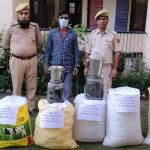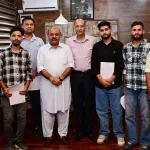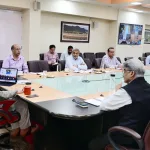WORLD RADIO DAY
It was in 1895 that Guglielmo Marconi; an Italian physicist sent and received his first radio signal in Italy in 1895. By 1899 he flashed the first wireless signal across the English Channel and two years later received the letter ‘S’, telegraphed from England to Newfoundland. Since its invention, it has emerged as a powerful and dynamic medium of communication at the grassroots level; a medium of communication admired by all generations specially the older one who reminisce listening to their radio transistors. In India, radio has developed a deep connection with rural listeners and it is the cheapest medium for entertainment. Due to this local connect and connect with consumers, advertisers too find this medium a great media investment as the talk group of the radio channels audience is well accounted for. Radio jockeys that stand as influencers too help in building a local connection as they speak the language of the region and help in bringing about a social change in that area the channel is present in. Rural India still relies on it overwhelmingly for information. It also remains the most inexpensive and portable medium:
At the global level also, radio remains the most widely consumed medium. Its unique ability to reach out the widest audience means radio can shape a society’s experience of diversity, stand as an arena for all voices to speak out, be represented and heard (UNESCO). Radio stations serve diverse communities, offering a wide variety of programs, viewpoints and content and reflect the diversity of audiences in their organizations and operations.
History of Radio
During British Rule, broadcasting began in June 1923 with programs by the Bombay Presidency Radio Club and other radio clubs. According to an agreement on 23 July 1927, the private Indian Broadcasting Company Ltd (IBC) was authorized to operate two radio stations: the Bombay station which began on 23 July 1927, and the Calcutta station which followed on 26 August 1927. IBC went into liquidation on 1 March 1930. The government took over the broadcasting facilities and began the Indian State Broadcasting Service (ISBS) on 1 April 1930 on an experimental basis for two years and permanently in May 1932. ISBS then went on to become All India Radio (AIR) on June 08, 1936. When India attained independence, there were six radio stations within Indian territories of Delhi, Bombay, Calcutta, Madras, Tiruchirapalli and Lucknow.
All India Radio (AIR) officially known since 1956 as ‘Akashvani’ is the national public radio broadcaster of India. AIR is the largest radio network in the world and one of the largest broadcasting organizations in the world in terms of the number of languages broadcast and the spectrum of socio-economic and cultural diversity it serves. AIR’s home service comprises 420 stations located across the country, reaching nearly 92% of the country’s area and 99.19% of the total population. AIR originates programming in 23 languages and 179 dialects (Prasar Bharti). Radio was the monopoly of All India Radio, the public service broadcaster till a couple of years back.
World Radio Day
Every year February 13 celebrates the glorious tunes from a traditional medium all over the world. The day has been celebrated as ‘World Radio Day’ since 1946 when on this day; the United Nations Radio was established. The day was officially proclaimed by the member states of UNESCO and later adopted by the UN’s General Assembly in 2012 as an International Day. Every year, the day is marked with a distinctive theme. This year the day is celebrated the theme is ‘Radio: A century informing, entertaining and educating’.
Relevance of Radio
In present era where there is an information explosion and the credibility and reliability of information and different sources is at stake. The audio visual aids are indulging in fake news and news that are not from a reliable source. It is often observed that in the TRP race to grab eyeballs, even TV channels tend to exaggerate and repeat themselves. This is not the case with radio. In the radio, information is crisp, straightforward and informative. People listen attentively as they know it won’t be repeated. Radio helps audiences focus and retains their attention for a longer duration as compared to TV, where pictures and headlines distract the viewer. Radio also played an important role in the first year of the COVID-19 pandemic, not only in transmitting information related to the disease, but also as support in the educational process after face-to-face classes were canceled.
Community Radio
It is a type of radio service that caters to the interests of a certain area, broadcasting content that is popular to a local audience but which may often be overlooked by commercial or mass media broadcasters (UNESCO 2002). It has a short range and caters to the information needs of communities living in the surrounding areas owned, run and maintained by a community. In December 2002, GoI approved policy for the grant of licenses for setting up of community radio stations to well-established educational institutions including IITs/IIMs. On 1 February 2004, Anna FM was launched as India’s first campus community radio station by the students of the Anna University (Anna University). In 2006, the government of India amended the community radio policy which allowed the agricultural universities, educational institutions and civil society institutions such as NGOs to apply for a community radio broadcasting license under the FM band 88–108 Mega Hertz. Currently India has 340 Community Radio Stations serving Farmers, Tribal, Coastal communities, ethnic minorities and special interests. Dr. Sreedhar is hailed as the father of community radio in India. He set up the first community radio station in Anna University, Tamil Nadu.
Community Radio in Agriculture
As it is also a portable medium which a farmer can carry with him/her to the place where they work and listen to the station while doing their work, it plays a great role in agriculture and allied sectors. Community radio with its flexibility, immediacy, immense potentiality and capacity has the potential to cater to the diverse needs of farming community. Realizing the potential of Community Radio, the University of Agricultural Sciences (UAS), Dharwad launched the Krishi Community Radio Station (KCRS), FM 90.4 MHz on May 17, 2007 exclusively for farmers. With this, it became the first agricultural university in India to launch this concept. Right now, it is broadcasting programmes covering the latest agricultural technology to educate the farmers on cropping pattern, improved agricultural practices, technology on animal husbandry, poultry farming, horticulture, fisheries, environment, income generating activities, health, hygiene, nutrition etc involving experienced and successful farmers and experts. Innovative farmers and other local people are used as resource persons in around 30 to 40 per cent of the programme development. Farmers were of the opinion that the information received from KCRS is very useful and relevant to their situation. They also indicated that KCRS may broadcast real time market information on input and farm produce which would help them realize better price for their produce.
Birsa Haryali community radio by Birsa Agricultural University, Ranchi; Radio Adanto, community radio station of Allahabad Agricultural Institute AAI Deemed University, Uttar Pradesh, Pantnagar Janvani by Govind Vallabh Pant University of Agriculture & Technology in Uttarakhand reaches more than 80 villages in the radius; CCS Radio by CCSHAU Hisar and TNAU E-Community Radio by TNAU Madras are some of the successful community radios running successfully and benefitting farming community all across the country. Community Radio Stations are a tool for gender Empowerment. The Deccan Development Society Audio Initiative at Pastapur, Andhra Pradesh is managed entirely by Dalit women. It has been working with 5000 Dalit women of Medak district working on food sovereignty, seed sovereignty, natural resource management and a host of other related issues related to them. These also address various social issues. Radio programme in Jharkhand ‘Chala Ho Goan Mein’ broadcasted every Sunday at 7:15 pm covering 45 villages in Lesliganj and Panki blocks of Palamu. Programme promoted an atmosphere of debate and discussion on important issues. Several peoples claimed that peoples in the village have left consumption of alcohol, start sending their girl child to schools.
It can thus be concluded that Radio is a potent tool providing grassroots connect that can be exploited to strengthen agricultural extension for the ultimate benefit of farming communities all across the globe.
(Dr. Kumar writes on agriculture and social issues and can be reached at: [email protected])





